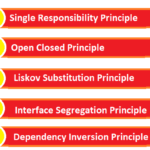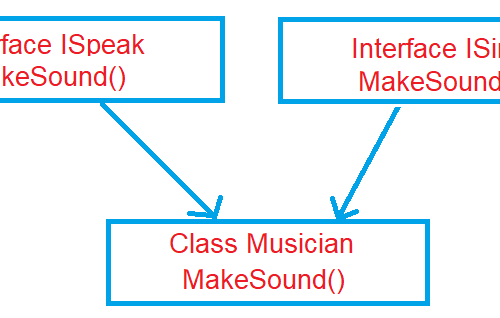Difference between Scoped vs Transient vs Singleton in .NET Core
“Scoped vs transient vs singleton – Are you delving into the world of .NET Core and feeling a bit overwhelmed by the terminology? Scoped, transient, and singleton are terms you’ll frequently encounter in this context, and understanding their differences is crucial. In this comprehensive guide, we’ll explore the distinctions between scoped, transient, and singleton services in .NET Core, shedding light on when to use each. So, let’s dive right in!”
Table of Contents
Understanding the Basics
Before we delve into the specifics, let’s establish a fundamental understanding of these terms:
Scoped Services
Scoped services in .NET Core are created once per client request. They exist throughout the lifetime of a single HTTP request, ensuring that any dependencies injected into them remain consistent for the duration of that request.
Unlock the potential of software design with the Factory Design Pattern in C#, revolutionizing efficient object creation and code flexibility.
Example: Imagine you’re building a web application, and a user submits a request to update their profile. During that request, you may want to access the user’s data multiple times. Scoped services ensure that you’re working with the same user data throughout that single request, making it efficient and consistent.
Transient Services
In contrast, transient services are created anew every time they are requested. This means that a new instance of a transient service is provided whenever it’s needed, making them ideal for stateless and short-lived operations.
Explore the world of dictionaries in C# programming to efficiently manage and manipulate key-value pairs.
Example: Consider a scenario where your application needs to perform a series of quick, independent calculations. Each calculation can be handled by a transient service, guaranteeing that each instance is fresh and isolated from the others.
Singleton Services
Singleton services, as the name suggests, are created only once during the lifetime of an application. They are shared across all clients and requests, making them suitable for scenarios where a single instance should serve the entire application.
Example: If your application requires a configuration manager to handle global settings, using a singleton service ensures that there’s a single, centralized instance managing these settings, promoting consistency throughout your application.
Now that we have a clear grasp of the basics, let’s explore these concepts in more detail.
Scoped Services in .NET Core
When to Use Scoped Services
Scoped services are particularly handy in scenarios where you need to maintain state across different components within a single HTTP request. Some common examples of when to use scoped services include:
Explore the SOLID principles in C# for building robust and maintainable software architectures.
- Database Connections: When you want to ensure that multiple components within a single HTTP request share the same database context.
- User Authentication: Scoped services can help maintain user-specific information, such as authentication tokens, throughout a single request.
- Caching: If you need to cache data during the processing of an HTTP request, scoped services are the way to go.
Example: Let’s say you’re developing an e-commerce website. When a user adds items to their shopping cart, you want to track those items throughout their entire shopping session. Scoped services allow you to maintain the shopping cart state for the duration of their visit.
Transient Services in .NET Core
When to Use Transient Services
Transient services are best suited for situations where you want a fresh instance every time one is requested. Here are some scenarios where transient services shine:
- Stateless Operations: If your operation doesn’t rely on maintaining state between calls, using transient services is efficient and safe.
- Thread Safety: Transient services are inherently thread-safe because each client gets its private instance.
- Lightweight Dependencies: When dealing with lightweight and stateless dependencies, such as simple calculations or data formatting, transient services are a good fit.
Example: Think of a web application that needs to generate random passwords for user registration. Each time a new password is generated, you want it to be entirely independent of previous passwords. Transient services ensure this.
Singleton Services in .NET Core
When to Use Singleton Services
Singleton services are reserved for instances where you want to share a single instance across your entire application. This approach can be beneficial in various situations:
- Resource Management: When you need to manage limited resources, such as a single connection to an external service or a shared configuration, singleton services are the way to go.
- Application-Wide State: If you want to maintain global state or configuration settings throughout your application’s lifetime, singleton services are the go-to choice.
- Expensive Resource Sharing: When creating an instance of a service is resource-intensive, you can save resources by using a singleton.
Example: Imagine you’re developing a game that connects to an external payment gateway. Creating a new connection for each transaction would be inefficient. A singleton service for managing the payment gateway connection ensures that resources are used wisely.
Discover a wealth of C# interview questions by visiting our page on C# interview questions: C# Interview Questions.
Scoped vs Transient vs Singleton: Key Takeaways
Let’s summarize the key takeaways to help you choose the right service lifetime for your .NET Core application:
| Aspect | Scoped Services | Transient Services | Singleton Services |
|---|---|---|---|
| Creation Frequency | Once per HTTP request | Every time they are requested | Only once during the lifetime of the app |
| Use Cases | Maintain state within a request | Stateless and lightweight operations | Resource management, global state |
| Thread Safety | Shared within a single request | Private instances for each request | Shared across all clients and requests |
| Example | Shopping cart in an e-commerce app | Generating random passwords | Managing a global configuration |
By understanding the differences between scoped, transient, and singleton services, you can optimize your .NET Core application for efficiency and performance.
Conclusion
In the world of .NET Core, understanding the differences between scoped, transient, and singleton services is essential for optimizing your applications. By making informed choices about service lifetimes, you can improve performance, resource management, and overall application efficiency. So, next
FAQ’s
Can I change the lifetime of a service at runtime?
No, the lifetime of a service is determined at the time of registration and cannot be changed dynamically.
Are there any performance implications when choosing different service lifetimes?
Yes, choosing the appropriate service lifetime can significantly impact the performance of your application. For instance, using scoped services when singleton services are more appropriate can lead to resource inefficiencies.
Can I mix and match different service lifetimes within my application?
Absolutely. In many cases, it’s advisable to use a combination of scoped, transient, and singleton services to meet the specific requirements of different components within your application.
Are there any built-in services in .NET Core that use these lifetimes?
Yes, many built-in services in .NET Core use scoped, transient, or singleton lifetimes, depending on their intended use and behavior.
How do I register a service with a specific lifetime in .NET Core?
You can register services with the desired lifetime using the AddScoped, AddTransient, and AddSingleton methods in the Startup.cs file of your application.
What happens if I don’t specify a lifetime for a service during registration?
If you don’t specify a lifetime, the default lifetime for services in .NET Core is transient.
Related Posts
- LINQ Join with Multiple Conditions in C# (.Net) 2024
- Exploring C# Record vs Class 2024
- Mediator pattern c# example 2024 (Mediator design pattern c#)
- Understanding of What is Middleware in C# (.Net Core) 2024
- Check out whats new features are coming in .Net 9
- Value Type and Reference Type in C# – A Guide to Value vs. Reference Types in C#
- Singleton Design Pattern in C# with Example A Step-by-Step Guide to Implementing the Singleton Design Pattern in C#
- Mastering the Factory Design Pattern in c# :Benefits of Using the Factory Design Pattern in C#
- Learning SOLID Principles C# with Examples : Best Practices, Applying SOLID principles in c# to write better C# code
- Master the Top Advanced C# Interview Questions and Answers 2024
- Deep Dive into C# Dictionary: Key-Value Pair (Effective methods)
- What is code Refactoring in C# 2024: Improving Code Quality and Maintainability








